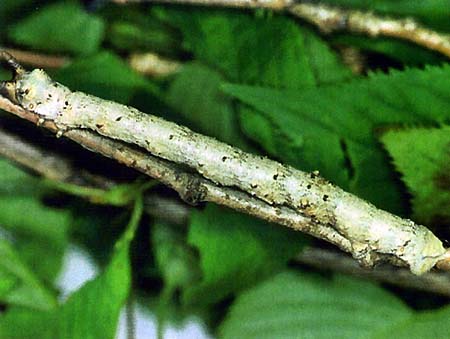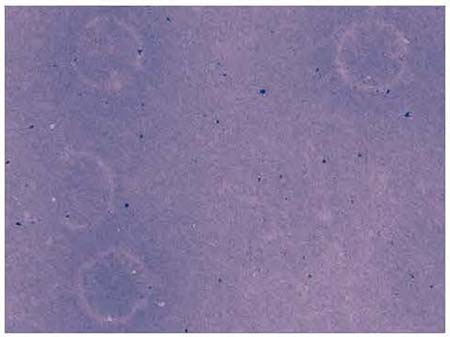Home > Research > Research Results > Research Results 2020 > Discovery of a new type of virus that infests major occurrences of larvae of the Japanese peppered moth
Update:September 30, 2020
Main content starts here.
Discovery of a new type of virus that infests major occurrences of larvae of the Japanese peppered moth
| Article title |
A new cypovirus from the Japanese peppered moth, Biston robustus |
|---|---|
| Author (affiliation) |
Jun Takatsuka (a) (a) Department of Forest Entomology, FFPRI, Tsukuba, Ibaraki, Japan. |
| Publication Journal |
Journal of Invertebrate Pathology、174、107417、 June 2020 DOI:10.1016/j.jip.2020.107417( External link ) |
| Content introduction |
Larvae of the Japanese peppered moth Biston robustus inflict damage on many species of trees by devouring their leaves. In the Ogasawara and Izu archipelagos of Tokyo Metropolitan Prefecture, this moth often appears in great numbers and devastates the leaves of camellias, which has a severe impact on the camellia oil industry. However, chemicals that can be used to remove this pest are extremely limited. Furthermore, synthetic farm chemicals cannot be used in camellia fields that are cultivated to produce camellia oil, so it is necessary to devise a strategy for dealing with outbreaks of the moth without the use of chemicals. In the present study, when larvae of the moth that had died from unknown causes were examined, a new type of virus was discovered and isolated. Based on morphological observations with an electron microscope, analyses of all genetic information, etc., it was found to be a new type of cypovirus (CPV). Furthermore, a method was developed to cultivate this virus using larvae of the silkworm moth. CPVs are viruses that are found only in arthropods, especially insects. Several types of CPVs are used as insecticides in many countries around the world, including Japan, with excellent results. In order to develop viruses that infect insects as insecticides, it is necessary to breed insect hosts and cultivate the virus. However, no method has yet been established to breed B. robustus. Nevertheless, the method developed in the present study for cultivating this CPV using the larvae of the silkworm moth can pioneer the way for developing it as an insecticide against B. robustus. Further research will be needed in order to put this method to practical use, including considerations for safety and other factors.
Photo2:The newly discovered virus. It exists as globular particles having a diameter of about 65 nanometers. One nanometer is 1/1,000,000 of a millimeter. |
Copyright © Forest Research and Management Organization. All rights reserved.


